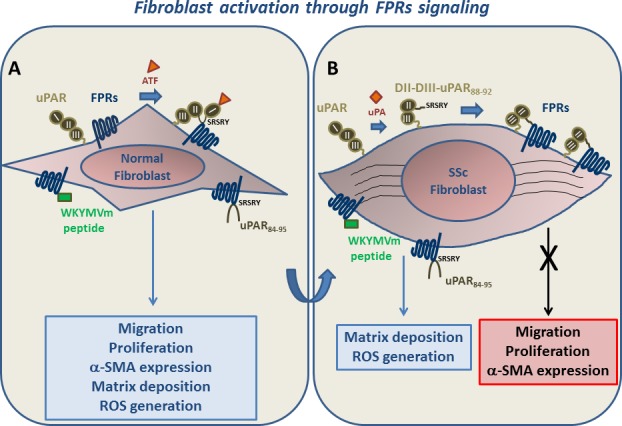
Panel A: normal fibroblasts. After stimulation of FPRs/uPAR cross-talk by ATF, unmasking the uPAR88-92 region, or FPRs engagement by WKYMVm and uPAR84-95 peptides, migration and proliferation increase and a myofibroblastic phenotype is acquired, through increased α-SMA expression, matrix deposition and ROS generation.
Panel B: SSc fibroblasts. Membrane expression of FPRs and of a truncated uPAR form (DII-DIII-uPAR88–92), originating by uPA- or protease-mediated uPAR cleavage, is increased. DII-DIII-uPAR88–92 contains the SRSRY peptide that, by chronically interacting with FPRs, could desensitize them to migratory and proliferative signals. FPRs stimulation by WKYMVm and uPAR84-95 peptides is still able to induce matrix deposition and ROS generation.
